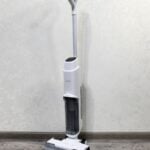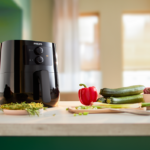If you’re looking to jump into large-format 3D printing without spending thousands, the Elegoo Neptune 4 Max continues to be one of the most compelling options in 2025. Building on the success of its predecessor, this massive FDM printer combines speed, print quality, and affordability in a way few others can match—especially at the sub-$500 price point.
This printer is recommended to people who are familiar with 3D printing and can work through some quirks and issues beginners might run into so if you have experience in the field you won’t find a better deal for the money.
Below is a deep dive into what makes the Neptune 4 Max tick, where it shines, and where it stumbles, based on expert reviews, firmware updates, and user community feedback from across the web.
And be sure to check out the product on Elegoo’s website here: https://us.elegoo.com/products/neptune-4-max-fdm-3d-printer
Overview: Why the Neptune 4 Max Still Dominates Its Class
- Build Volume: 420 x 420 x 480 mm – massive enough for helmets, cosplay armor, and architectural models.
- Firmware: Klipper out-of-the-box – enabling input shaping, pressure advance, and high-speed printing.
- Top Speed: Advertised up to 500 mm/s; realistically, most prints run best around 250-350 mm/s.
- Retail Price: $499.99 (as of April 2025), often discounted to $429 on flash sales.
That build volume alone puts it in a rare class, but it’s the combination of Klipper firmware and smart motion features that gives it a leg up over slower, similarly priced models like the Anycubic Kobra 2 Max or Creality CR-M4.
Key Specs and Features
| Feature | Specification |
|---|---|
| Build Volume | 420 x 420 x 480 mm |
| Max Print Speed | 500 mm/s (default: 250 mm/s) |
| Acceleration | Up to 8000 mm/s² |
| Hotend Temp | Up to 300°C |
| Bed Temp | 110°C |
| Extruder | Direct Drive, Dual-Gear, 5.2:1 gear ratio |
| Leveling System | 121-point auto mesh bed leveling |
| Connectivity | USB, Wi-Fi, and LAN |
| Touchscreen | 4.3″ UI with Klipper Screen |
| Firmware | Stock Klipper (with Moonraker and Fluidd UI) |
The out-of-the-box Klipper integration is a huge win. Unlike Creality’s Sonic Pad add-on or DIY Klipper setups, the Neptune 4 Max doesn’t require tinkering to get fast, clean prints. Features like Input Shaping and Pressure Advance are already pre-configured and ready to go.
Pros: What It Does Right
- Massive Print Volume – Print cosplay helmets, full-size terrain boards, or dozens of miniatures in one go.
- Pre-installed Klipper – No Raspberry Pi or external controller needed, just power on and go.
- Excellent Cooling – A high-CFM part cooling fan helps maintain overhang quality even at fast speeds.
- Flexible Material Support – Prints PLA, PETG, ABS, ASA, TPU, and even nylon with a hardened nozzle.
- Amazing Price-to-Performance Ratio – You’d need to spend twice as much for similar specs elsewhere.
Cons: What You Should Watch Out For
- Z-Axis Syncing Issues – Some units exhibit uneven Z height after power cycles, requiring manual adjustment or G34 tuning.
- Firmware Limitations – While Klipper is powerful, the default setup lacks certain advanced tuning options. Many users install custom firmware like OpenNept4une for full control.
- Large Footprint – At over 26 kg and with a wide frame, it demands a dedicated workspace or print enclosure.
- Noise Levels – It’s quieter than earlier models, but still louder than CoreXY competitors like Bambu Lab P1P or Voron V0 builds.
What Real Users Are Saying
Reddit and Discord communities have been invaluable in shaping the Neptune 4 Max experience:
- One user reported improved print consistency and thermals after switching to custom firmware with active cooling fan control and power loss recovery fixes.
- Others mentioned that the stock Klipper config, while good for beginners, can be improved by enabling acceleration tuning and adjusting filament-specific pressure advance.
- Many praised the printer’s ability to reliably pump out functional prototypes, tool holders, and even commercial orders with minimal downtime.
Firmware Tweaks and Must-Do Mods
For power users, here are the most recommended upgrades:
- Install OpenNept4une – Unlock full Klipper config access, advanced macros, and heater protection settings.
- Add Input Voltage Monitor – Useful for protecting electronics from unstable power delivery.
- Replace PTFE Tubing – The included tubing can degrade at high temps; upgrade to Capricorn for longevity.
- Linear Rails Mod – Some users are replacing the Y and X-axis wheels with linear rails for better motion precision.
The Verdict So Far in 2025
The Elegoo Neptune 4 Max continues to be a top-tier pick for anyone needing high-speed, large-format printing without the headaches of DIY Klipper builds or the steep prices of flagship printers. While it’s not without its quirks, firmware updates and community mods have matured the Neptune 4 Max into a serious workhorse printer.
This may not be the best choice for beginners due to the steep learning curve and troubleshooting that might be required to get it working, but once you do the perks really do deliver a great experience.
It’s best suited for hobbyists with prior 3D printing experience, Etsy sellers, prop makers, and anyone who values volume + speed + Klipper in one box. If you can deal with its size and fine-tune its calibration, the value you get from this machine is almost unmatched under $500.
Key Takeaways
- The Neptune 4 Max combines Klipper firmware with high-speed capabilities of up to 500mm/s and large build volume for affordable large-format printing.
- Despite some reported software issues, the printer offers advanced features like input shaping and pressure advance that benefit print quality and speed.
- The Neptune 4 Max costs only slightly more than the Neptune 3 Max while delivering significant hardware and firmware improvements for 3D printing enthusiasts.
Technical Specifications
The Elegoo Neptune 4 Max offers impressive technical capabilities that make it stand out in the 3D printing market. This printer combines a large build volume with high-speed printing and excellent temperature handling for versatile material compatibility.
Build Volume and Printer Size
The Neptune 4 Max features an exceptionally generous build volume of 420 x 420 x 480 mm (16.5 x 16.5 x 18.9 inches). This substantial printing space allows users to create large-scale models in a single print, eliminating the need to split designs into smaller components.
The spacious build area makes this printer ideal for producing architectural models, large prototypes, or custom furniture pieces. Compared to standard desktop 3D printers, the Neptune 4 Max offers nearly triple the printing capacity.
Users should consider the printer’s physical footprint when planning for placement, as the large build volume correlates to a larger overall machine size. The substantial build plate features 121-point auto bed leveling for consistent first-layer adhesion across the entire printing surface.
Printing Speed and Precision
The Neptune 4 Max comes equipped with Klipper firmware, enabling remarkable printing speeds of up to 500 mm/s. The default speed setting is 250 mm/s, which balances speed with quality for most printing tasks.
The printer achieves accelerations up to 8000 mm/s², significantly reducing print times compared to conventional FDM printers. These high speeds don’t compromise quality thanks to advanced features like input shaping and pressure advance calibration.
Input shaping technology helps minimize ringing and ghosting artifacts even at high speeds. Pressure advance calibration ensures consistent extrusion throughout the print, producing clean corners and dimensional accuracy.
The pre-installed Klipper firmware also provides users with extensive customization options for fine-tuning print parameters. This combination of speed and precision makes the Neptune 4 Max suitable for both rapid prototyping and detailed final products.
Temperature Capabilities
The Neptune 4 Max features impressive temperature handling with a maximum nozzle temperature of 300°C. This high-temperature capability expands the range of compatible materials beyond basic filaments.
The printer can easily handle standard materials like PLA and PETG. The high-temp nozzle also accommodates more demanding filaments such as ABS, TPU, and various specialty materials that require higher extrusion temperatures.
An efficient cooling system helps manage heat dissipation, particularly important when printing at high speeds. The cooling design prevents heat creep issues that can lead to filament jams or inconsistent extrusion.
The heated bed complements the high-temperature nozzle by providing proper adhesion for different material types. This combination of thermal capabilities makes the Neptune 4 Max a versatile machine suitable for both hobbyist and professional applications.
Material Compatibility and Extrusion
The Elegoo Neptune 4 Max features a versatile extrusion system designed to work with a wide range of filament materials. Its high-performance extruder and advanced thermal management enable reliable printing across various temperature requirements.
Supported Filament Types
The Neptune 4 Max supports numerous filament types, making it suitable for diverse printing projects. Standard materials like PLA (175-220°C) and PETG (230-250°C) print exceptionally well on this machine.
For more demanding applications, the printer handles engineering-grade materials including ABS and ASA (220-260°C), which require higher temperatures and benefit from the enclosed printing environment.
The printer also processes flexible filaments like TPU with good results due to its direct drive setup. More specialized materials such as Nylon (250-270°C) can be printed with proper temperature control.
The Neptune 4 Max uses standard 1.75mm filament diameter, which is widely available from most manufacturers. This compatibility gives users extensive freedom to choose materials based on project requirements rather than printer limitations.
Dual-Gear Direct Extruder Features
The Neptune 4 Max comes equipped with a dual-gear direct extruder system that provides several significant advantages. This setup grips filament from both sides, creating consistent pressure and reducing the chance of slipping during printing.
The extruder achieves precise filament control with a gear ratio designed for both speed and torque. This balance allows for rapid printing (up to 500 mm/s) while maintaining reliable extrusion even at high speeds.
A built-in filament sensor detects when material runs out or breaks, automatically pausing prints to prevent failures. This feature saves time and materials on longer print jobs.
The extruder assembly includes a high-quality hotend that heats up quickly and maintains stable temperatures. Users can upgrade the extruder with ELEGOO’s assembled extruder kit for enhanced performance and more detailed prints.
Device Connectivity and Firmware
The Elegoo Neptune 4 Max offers extensive connectivity options and powerful firmware capabilities that enhance its functionality as a high-performance 3D printer. Its software ecosystem and connection methods provide users with flexibility for controlling prints and updating the system.
Integrated Connectivity Options
The Neptune 4 Max provides multiple connectivity options to accommodate different user preferences. Users can connect to the printer via WiFi, LAN, or USB connections. These options make the printer accessible from various devices without requiring direct physical proximity.
The WiFi connectivity allows for wireless printing and remote monitoring of print jobs. This feature is particularly useful for checking print progress from another room or sending files to the printer without using a memory card.
USB connectivity offers a reliable direct connection for transferring files or updating firmware. The printer also supports LAN connections for users who prefer a wired network setup for more stable communication.
Firmware and Software Support
The Neptune 4 Max comes pre-installed with Klipper firmware, a powerful software solution that significantly enhances printing performance. This firmware enables impressive printing speeds of up to 500 mm/s (with default settings at 250 mm/s) and acceleration up to 8000 mm/s².
Klipper runs on the printer’s ARM 64-bit processor and supports advanced features like input shaping and pressure advance calibration. These features help improve print quality even at higher speeds.
Firmware updates are available but require manual installation. Users need to copy the firmware files to a TF card’s root directory and insert it into the printer. When updating, be aware that the process will delete tasks in the current queue.
The Neptune 4 Max is compatible with popular slicing software like Cura and can process common file formats including STL and OBJ files. This compatibility ensures users can prepare models using their preferred software tools.
Advanced Features and User Experience
The Neptune 4 Max offers several advanced capabilities powered by Klipper firmware, enabling users to achieve faster print speeds while maintaining quality. The system includes several automated functions that enhance the printing experience.
Automated and Advanced User Functions
The Neptune 4 Max features an auto-leveling system that simplifies the bed leveling process. This function helps users maintain consistent first layers across the large build volume. The printer supports impressive speeds of up to 500 mm/s (with a default of 250 mm/s) and acceleration up to 8000 mm/s².
Klipper firmware enables advanced features like input shaping and pressure advance calibration. Input shaping reduces ringing and ghosting in prints, especially at higher speeds. This is particularly important for a large printer where vibrations can affect print quality.
The machine includes a resume printing function that allows users to continue prints after power outages or accidental stops. It also features filament detection that pauses printing when filament runs out.
Elegoo Ecosystem and Support
Elegoo’s support for the Neptune 4 Max has been mixed according to user reports. As a first-generation Klipper-based printer from Elegoo, some users have encountered bugs and issues requiring troubleshooting.
The printer requires specific setup steps to achieve good print quality. Many users note that the Neptune 4 Max needs additional configuration beyond the out-of-box settings. Some features, like filament swapping (M600 command), may require manual setup.
Elegoo has worked with users to address issues through firmware updates and support communications. The learning curve can be steeper for beginners due to Klipper’s more technical nature compared to Marlin firmware used in previous models.
Fans play a significant role in the Neptune 4 Max design, featuring a large curtain fan intended to improve print cooling and quality.
Frequently Asked Questions
The Elegoo Neptune 4 Max brings several advanced features to the 3D printing experience while maintaining user-friendly operation. Users often have specific questions about its capabilities, compatible materials, and potential improvements.
What enhancements have been made in the Neptune 4 Max compared to its predecessor?
The Neptune 4 Max offers a significantly larger build volume than previous models, allowing for much bigger prints in a single run. This expansion doesn’t sacrifice print quality.
The printer includes improved linear rails for smoother, more precise movement during printing operations. This upgrade helps reduce vibration issues that can affect print quality.
Another key enhancement is the inclusion of a more powerful heating system that reaches target temperatures faster. The printer also features input shaping technology to reduce ringing artifacts in prints.
Which filaments can be used with the Elegoo Neptune 4 Max and are there any specific brand recommendations?
The Neptune 4 Max supports a wide range of filaments including PLA, ABS, PETG, TPU, and various specialty filaments. Its high-temperature hotend allows versatility in material selection.
For best results, many users recommend sticking with known brands like eSun, Hatchbox, or Polymaker for consistent quality. The printer’s settings can be easily adjusted to accommodate different filament brands.
Testing has shown that the printer handles PLA extremely well out of the box, while more technical filaments may require some setting adjustments.
What is the print speed capacity of the Elegoo Neptune 4 Max and how does it impact print quality?
The Neptune 4 Max can achieve impressive speeds up to 500mm/s for travel movements, with normal print speeds ranging from 80-150mm/s for quality prints. These speeds exceed many competitors in its price range.
At higher speeds, some fine details may be affected, particularly on complex models. Users often find a balance around 100mm/s provides excellent results for most applications.
The printer’s robust frame design helps maintain quality even at higher speeds by reducing vibration and movement artifacts.
Can you provide a comparative analysis between the Elegoo Neptune 4 Max and the Neptune 4 Plus?
The Neptune 4 Max offers a significantly larger build volume (420 x 420 x 480mm) compared to the Neptune 4 Plus (320 x 320 x 400mm). This size difference makes the Max better suited for larger projects.
Both printers share core technologies including Klipper firmware and similar extruder designs. The Max version weighs more and requires additional space but maintains similar print quality.
Price difference between the two models reflects the size increase, with the Max typically costing about 25-30% more than the Plus version.
What are the available software options for slicing and printing with the Elegoo Neptune 4 Max?
The Neptune 4 Max works with most popular slicing software including Cura, PrusaSlicer, and Simplify3D. Many users prefer Cura due to its extensive profile options for Elegoo printers.
The printer uses Klipper firmware which provides a web interface for control and monitoring. This allows for convenient remote operation and print management.
Elegoo provides starter profiles for their recommended slicing software, making initial setup straightforward for beginners.
What modifications or upgrades can be implemented on the Elegoo Neptune 4 Max to enhance its performance or capabilities?
Popular upgrades include installing a filament runout sensor to prevent failed prints when material runs out. Some users also add automatic bed leveling solutions for improved first layer results.
The stock cooling system can be enhanced with improved fan ducts, many of which are available as downloadable 3D-printable models. Better cooling helps with bridging and overhangs.
For maintenance and longevity, installing a Z-axis stabilizer can reduce wobble on taller prints. A hardened steel nozzle upgrade allows for printing abrasive filaments without rapid wear.







